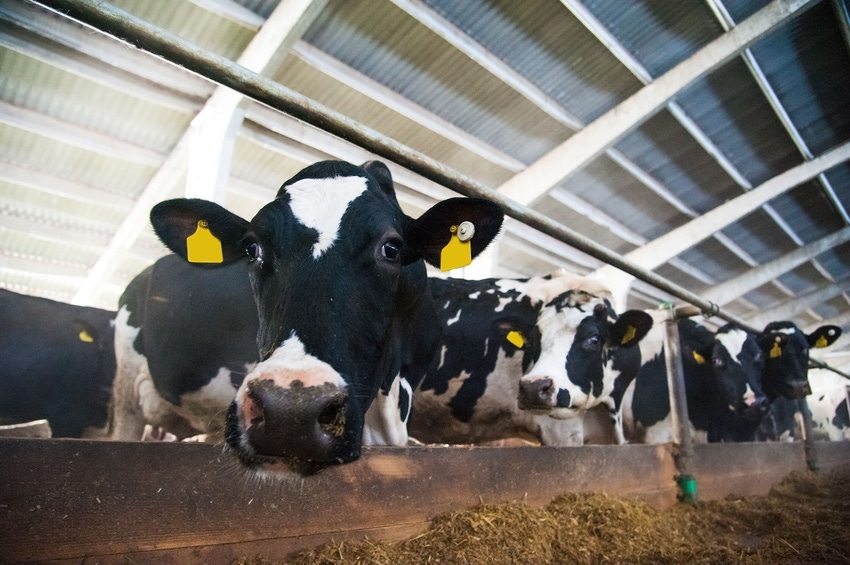Wet brewers grains may support dairy heifer growth
Including byproduct feed ingredient in heifer growing rations yielded similar performance as corn/soybean meal concentrates.

A priority for dairy operations is to decrease production costs while optimizing heifer growth without sacrificing productivity, University of New Hampshire researchers wrote in an advance article published in the journal Translational Animal Science.
Researchers Eric Hatungimana, Tess Stahl and Peter Erickson noted that the cost of energy and protein feeds — especially corn and soybean meal — can be expensive, so substituting alternative sources for those ingredients is "of great importance."
Hatungimana et al. investigated wet brewer’s grains (WBG) — byproducts of the brewing industry — which have gained popularity because of high nutritional value, low cost and availability in various regions of the country. They conducted a study to evaluate the growth performance and nutrient digestibility of Holstein heifers limit-fed diets containing differing amounts of WBG.
The study was a 12-week randomized complete block design using 30 yearling Holstein heifers starting at about 378 days of age and with an average initial bodyweight of 357.8 kg. Treatments were 0%, 10% or 20% of WBG on a dry matter basis, and diets were formulated to be limit-fed for dry matter intake (DMI) at 2.35% of bodyweight and provided 15% crude protein and 2.27 Mcal of metabolizable energy per kilogram of dietary dry matter, Hatungimana et al. explained.
DMI was recorded daily, while bodyweight and skeletal measurements were recorded every two weeks. During week 12, fecal samples were collected directly from the rectum over four consecutive days and composited by heifer to determine apparent total-tract nutrient digestibility using acid detergent insoluble ash as a marker.
According to the researchers, DMI, bodyweight and average daily gain (ADG) were not different among treatments (P = 0.2, P = 0.4 and P = 0.6, respectively). DMIs ranged from 8.6 to 9.0 kg per day. Average bodyweights were 404.4, 411.5 and 409.3 kg for heifers fed the 0%, 10% and 20% WBG diets, respectively. ADGs were 1.03, 1.04 and 0.96 kg per day for heifers fed the 0%, 10% and 20% WBG diets, respectively.
They added that skeletal measurements and body condition scores also did not differ among treatments except for the change in heart girth (P < 0.01) and initial condition score (P < 0.01).
Apparent total tract digestibilities of dry matter, organic matter, crude protein, fat and hemicellulose were greater or tended to be greater in heifers fed 0% and 20% WBG treatments than heifers fed 10% WBG (P = 0.04, P = 0.04, P = 0.06, P = 0.06 and P = 0.01, respectively), Hatungimana et al. reported. Neutral detergent fiber, acid detergent fiber and fat digestibilities were similar among treatments (P = 0.2, P = 0.3 and P = 0.3, respectively).
During the digestibility phase, DMI tended to be greater (P = 0.08) for the 10% WBG treatment.
Hatungimana et al. concluded that limit-feeding heifers with diets containing up to 20% WBG could replace soybean- and corn-based concentrates without adverse consequences to heifer growth performance.
About the Author(s)
You May Also Like



